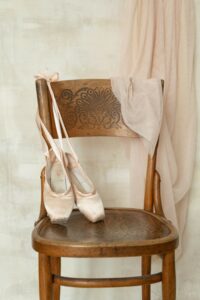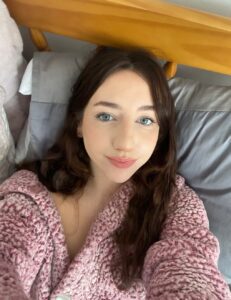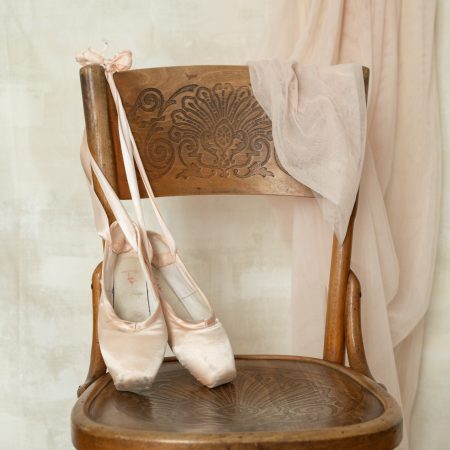Do you remember when you last held a hand-made object in your hands? Perhaps it was a cosy woollen sweater, or a carved wooden toy? These objects are so much more than just objects; they are the manifestation of love, sculpted with raw human emotion, talent, and purpose. In an era of rapid modernisation, the beauty of traditional craft-making is often lost under technology’s looming shadow, threatening the connection that we have to our own cultural heritage. In collaboration with Portsmouth Museum and Art Gallery, Chanel Parker, Loraya Head, and Gemma Norris curated a three-month exhibition to celebrate the livelihoods of our ancestors, and the importance of preserving their craftsmen’s skills for generations to come.

Many people are familiar with the long-established practices of blacksmithing and pottery, but countless unconventional crafts are slowly being forgotten due to their underrepresentation in mainstream media. Once renowned for their remarkable beauty and artistic merit, pointe-shoes, tapestries, and fans are just three of the highly endangered crafts in the contemporary UK. Our exhibition centred primarily on these, with Loraya, Gemma, and myself concentrating on each craft respectively. From the bejewelled fans and ‘flirtation language’ of the Elizabethan courts,[1] to the discovery of c. 4000 BC fans in Tutankhamen’s tomb, it is undeniable that these crafts are an integral part of our collective history. To lose them would be to lose the roots of our own unique national identity. The research processes behind our Endangered Crafts Exhibition were particularly challenging due to the obscurity of the topic at hand, and the lack of information available for us to freely review online. Our aim was to ensure that our exhibit addressed the widest possible audience, with a primary focus on the accessibility, inclusivity, and digestibility of our content. To cover all corners, we produced three main outputs: a pre-recorded 20-minute podcast, an informational poster panel displayed in the Portsmouth Museum, and a promotional 24 hour Twitter takeover.
We began by concentrating on our foremost objective: to design an educational, yet playful and stimulating poster for the visitors of Portsmouth Museum and Art Gallery. That may seem like an oxymoron, but with a little bit of help from JSTOR, we were able to conjure a mass of information which was inspiring and invigorating to consume. Among various other articles, we consulted Pamela Gerrish Nunn’s “Fine Art and the Fan 1860-1930,”[2] an analysis on the relationships between art and design, and Aaron C. Lawry’s “Pointe Shoes: A History of Reinvention, Commodification, and Mystification,”[3] which delves deeper into the history of ballet. Sifting through such a wealth of information was certainly daunting, but it was an intellectually rewarding process to handpick the most valuable and entertaining sources for our panel. In addition to this, we visited the Heritage Crafts Association and ‘Worshipful Company’ websites to harvest more information and enrich our expertise and knowledge on the history of our chosen crafts. Rest assured that our panel was not just some bland board on the wall; it was equally important to us that our work be artistically engaging, as well as heavily informative. To ensure thematic coherence, we incorporated the museum’s official RGB colours and hexadecimal colour codes into our design – creating a vibrant orange panel with black, grey, and blue details. Vision Boutique confirmed orange to be one of the world’s most eye-catching colours,[4] which, thankfully, would increase our poster’s success and engagement overall.
I do have a confession: my group and I were totally clueless when it came to podcast production. Having only lightly dabbled in content creation before, it was almost impossible to decide where to direct our research. Our indecision, coupled with the desire to keep our work accessible, had prompted us to lead with a more informal approach. We settled on a conversational podcast, littered with predetermined questions, light-hearted jokes, and a very rigid script to calm our nerves! It was evident to any listener that our podcast was not spontaneous, though this limitation did not undermine the craft-making knowledge and fun facts sprinkled in amongst all the awkwardness. One YouTube channel that we consulted to hone our skills was ‘Flash Point History’, which acted as somewhat of an inspiration for our output, as videos are usually around fifteen minutes (our planned duration), and are structured in an engaging, storytelling format. On the other hand, ‘The Girls Bathroom Podcast’ offered a girly and relaxed approach to unpacking recent drama and gossip, which inevitably appealed to our taste as a group of three girls in their early twenties. What we really wanted was to peddle a middle ground, so we incorporated all these features, as well as research from trusty JSTOR article ‘Scriptwriting’,[5] to spark up some ideas and finally hit record. With all the information laid out in front of us, we each spoke for approximately six uninterrupted minutes, and produced an easy-listening, informative podcast, accessible to all ages.
To conclude our project, we proposed a Twitter takeover to our contacts at the Portsmouth Museum and Art Gallery, which took place on the 11th of May. Indisputably, this was an incredible opportunity; it allowed us to extend our reach and message to a wider audience of 3000+ followers, and showcase our work on a greater international platform. We prepared for this event by meticulously studying the way that historical and archival accounts interact with their followers: do they use gifs, polls, images, etc? We wanted to ensure that we understood our audience, and how to really resonate with them, before diving headfirst into this idea. Each of us composed two tweets relating to our crafts, and three tweets dedicated to the promotion of the podcast – all accompanied with relevant photographs sourced from Unsplash, and a pun from Loraya. We received noteworthy public engagement from our broadcasts, accumulating over 4000 views, 70 plays, acknowledgment from Heritage Crafts, and a blog post on our work within the first 24 hours [6]. It was this that assured us that our research methods had been efficient, and that we had achieved our main aims of accessibility, interaction, and reach.
Just like pointe-shoes, tapestries, and fans, there are a total of 146 other endangered crafts currently existing in the UK.[7] The value of traditional crafts hides in the stories that they tell, and the connections that they can foster between people, cultures, and generations alike. Because of this, preservation of these practices is an essential way of honouring the legacy of our ancestors and safeguarding the rich cultural diversity that we experience in our nation. If you feel like you want to help, you can support these vocations by purchasing from a local artisan, attending fairs on craftsmanship and education, or promoting handiwork on your social media. Investment in these crafts is not only protecting the cultural heritage; it benefits the local economy, by contributing to a sustainable and prosperous future for all.
Check out Portsmouth Museum and Art Gallery’s Special Displays here, where you can find our panel and podcast for the Endangered Crafts Exhibition: https://portsmouthmuseum.co.uk/what-to-see-do/special-displays/.
References
[1] “A Short History of Hand Held Fans: The Worshipful Company of Fanmakers,” The Worshipful Company of Fanmakers, September 4, 2019. https://fanmakers.com/a-short-history-of-hand-held-fans/#:~:text=The%20origin%20of%20the%20fan&text=Becoming%20a%20fashion%20statement%2C%20they,imported%20to%20England%20in%20number.
[2] Palema Gerrish Nunn, “Fine Art and the Fan 1860-1930,” Journal of Design History 17, no.3, Dangerous Liaisons: Relationships Between Design, Craft, and Art (2004): 251-266.
[3] C. Aaron Lawry, “Pointe Shoes: A History of Reinvention, Commodification and Mystification,” Dress 48, no. 1 (November 12, 2021): 55–64.
[4] Vision Boutique, “What Color Catches the Eye First?: The Science of Vision,” Vision Boutique, April 1, 2022. https://vision-boutique.com/what-color-catches-the-eye-first-the-science-of-vision/#:~:text=Red%20and%20orange%20seem%20to,red%20and%20orange%20in%20popularity
[5] Wendy Bishop, and David Starkey, Keywords in Creative Writing (Utah: Utah State University Press, 2006.)
[6] Robert James, “Enhancing Students’ Skills and Experiences: A Twitter Takeover, an Exhibition and a Podcast,” history.port.ac.uk, May 11, 2023, https://history.port.ac.uk/?p=2831.
[7] “Craft Skills under Threat with 17 Additions to the Red List of Endangered Crafts.” Heritage Crafts, May 16, 2023. https://heritagecrafts.org.uk/redlist2023/#:~:text=For%20the%202023%20edition%2C%20259,are%20classed%20as%20currently%20viable.

Author: Chanel Parker
Bio: Chanel Parker is a second year History student at the University of Portsmouth, with a primary interest in political conflict, religious violence, and anticlericalism, particularly in sixteenth and seventeenth century Europe. She enjoys work on philosophy, theology, and the conceptualisation of supernatural belief.

